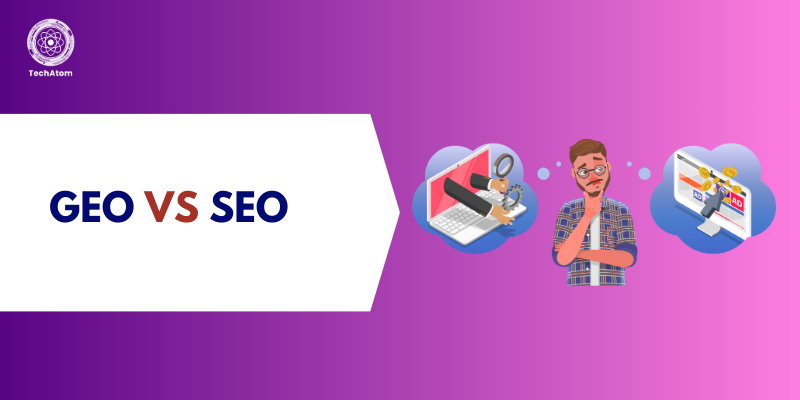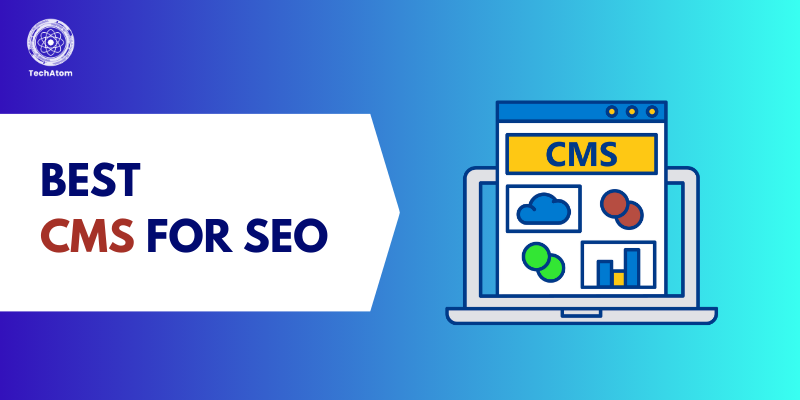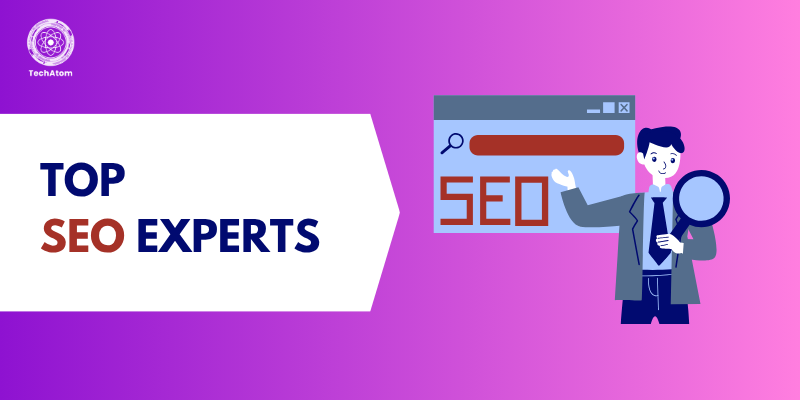Digital marketing isn’t just your success enabler. Rather, it's existentially useful.
Take digital marketing out of the equation. Businesses would find it hard to thrive. Sounds like an exaggeration? Not when you consider that over 5.18 billion use the internet globally. That’s 64.4% of the planet’s total population. And the numbers are escalating, day by day.
Digital marketing helps tap into the growing internet user base for business gains. It is about building brands and transforming ‘fence-sitters’ into buyers and brand loyalists. Every business needs the digital marketing edge with a gradual shift in customer journeys.
Though digital marketing seems simple, it is a broad term that entails every aspect of the online marketing strategy you leverage to promote your products or services.
This article aims to introduce you to what exactly digital marketing is and its different types.
So, let us get started with our discussion!
What is Digital Marketing?
It entails promoting brands to potential customers by leveraging the internet and other digital channels. These digital channels can be a website, app, search engine, social media, or email.
While digital channels can be targeted separately, outcomes are better when used in conjunction. There’s a term for the collective use of channels called the Omni-Channel approach. The Omni-Channel approach can translate into higher conversions, retention, sales, and ROI if handled properly. It’s digital marketing at its effective best.
We can say that if any marketing strategy involves electronic devices or digital communication, it is digital marketing. In this type of marketing, campaigns regarding brand promotion appear on computers, mobile phones, tablets, or any other electronic device. The promotion can take any form, including an online video, social media post, paid social media ad, and display ads.
How is Traditional Marketing Different from Digital Marketing?
Let’s dial the clock back to the 90s when traditional means were the marketing staple, and ad campaigns ran on print and electronic media. That was an ordeal, costing you time, effort, and money. Besides being hard to pull off, it took longer to deliver versus your goals and lacked measurability. In short, traditional marketing was neither a precision approach nor feasible for small businesses. Call it a number game that left much to be desired.
As a new-age approach, digital marketing plugs in the loopholes inherent in traditional marketing to emerge as the new normal. It’s easy to execute, cost-effective, measurable, well-targeted, and relevant for the tech-savvy millennials who search and buy online. But don’t mistake online marketing for digital marketing. The former is restricted to online channels only, whereas the latter encompasses even non-internet channels, such as TV.
The following table provides a clear difference between digital and traditional marketing:
|
Traditional Marketing |
Digital Marketing |
|
This marketing strategy includes promoting products and services through offline channels, such as banners, telephones, sponsorship, door-to-door, etc. |
This type of marketing entails the use of digital channels, such as SEO, SEM, PPC, etc., to promote products and services. |
|
Traditional marketing is challenging to measure because it does not involve any analytics tools. |
You can easily gauge your digital marketing effort through analytical tools. |
|
It seems pretty challenging to calculate the return on investment (ROI). |
This type of marketing makes it easy to compute the return on investment (ROI). |
|
Traditional marketing entails:
|
Digital Marketing includes:
|
|
It entails one-way communication as the process of marketing is rigid. |
It involves two-way communication, providing maximum satisfaction to customers. |
|
Traditional marketing is not cost-effective. |
This type of marketing is cost-effective. |
|
You can reach out to the local audience more with this type of marketing. |
It helps you reach wide audiences. |
However, it is important to note that there is a very thin line between the above two types of marketing strategies nowadays. This is because digital marketing has started to leverage traditional channels, like TVs, billboards, and mail, as digital components.
Benefits of Digital Marketing
People today spend most of their time online surfing the web, using social media platforms, reading work-related mail, and performing many other activities that require the internet. This increasing reliance of people on the internet can be beneficial for brand promoters. From small brick-and-mortar stores to large organizations, promoting their brand through digital channels can result in gaining a large number of audiences.
The following are some remarkable benefits of digital marketing:
- Creating brand awareness among a wide range of people on the internet.
- Engaging target audience and generating leads.
- Developing a loyal customer base and strengthening relationships with them.
- Assisting customers from their first touchpoint to the final step, i.e., sale.
Types of Digital Marketing
As discussed earlier, digital marketing is an umbrella term referring to any form of marketing done through the Internet. With the onslaught of new channels, the horizons of this type of marketing are expanding rapidly.
1. Search Engine Optimization (SEO)
Searchers punch their queries (keywords) at a search engine such as Google, Yahoo, or Bing. In response, the search engine populates a list of best-suited answers for that query.
Search Engine Optimization (SEO) is about ranking your website for that keyword. Call it a set of practices that place you where buyers are searching for your products and services. The better your rank organically, the higher CTRs, sales, and ROI you will garner.
Search engines employ bots to index web pages. Think of bots as virtual librarians tasked with reading books (web pages) and deciding which book would answer the searcher’s query most appropriately. The librarian uses certain ranking factors to rank the web pages for every search.
SEO strategies align your website with the ranking factors to achieve SERPs and boost visibility. Since ranking factors are dynamic, SEO has to evolve accordingly.
Why does SEO matter?
SEO is an advantage that no website or business can let pass up. Here’s why.
- Google alone receives over a trillion queries yearly, which is 70% of all queries.
- The top organic results pocket about 68% of the total traffic.
- The second-page results attract a modest 0.78% of searchers.
- SEO is the sole marketing strategy for 61% of marketers seeking organic traffic.
- Location-related searches account for 30% of all mobile traffic.
- 76% of searchers looking for products nearby rush to the business within 24 hours.
- A relevant search has the power to influence 39% of buyers.
- The “where to buy” searches are growing at a rate of 200% in the last 2 years.
Check out: SEO Best Practices
2. Pay-per-Click (PPC)
Pay-per-Click (PPC) is a proven lead generation strategy like SEO. However, there’s a basic difference. While SEO focuses on earning organic rankings, PPC is all about purchasing them.
Imagine typing a high-traffic query. There will likely be a few adverts right above the organic results. They are the sponsored links or PPC results. The pricing model is simple. You pay only when your advert is clicked upon or you receive the searcher’s call.
Increasing your Click Through Rates (CTRs) and generating more qualified leads is a breeze with PPC. Or else, you require spending months or perhaps years to make your way into the SERPs via SEO.
PPC also caters to other marketing objectives, such as data collection and retargeting. Flexibility and targeting come by default. Feel free to optimize your PPC campaign to your audience’s age, gender, preferences, geographical location, and other key factors.
Here are some facts and numbers about PPC:
- In 2017, PPC attracted $10.01 billion worth of investment from 7 million marketers.
- 50% of buyers reaching via PPC make a purchase than those via organic links.
- For 33% of searchers, sponsored links offer relevant solutions for their searches.
- Organic links fail to generate 89% of PPC traffic when a PPC campaign is stopped.
- Over 90% of internet users interact with Google Display Network ads.
- 79% of advertisers believe that paid ads have benefited their business.
- Over 62% of marketers are keen on enhancing their PPC budgets in the years to follow.
3. Social Media Marketing (SMM)
It is exactly what it means, i.e., leveraging social media for marketing. It involves business messaging through engaging, informative, creative, and shareable content published on social platforms.
With social media's popularity, SMM may offer tangible results if executed properly. Without spending a dime, you can post and update content on social platforms to build brands and drive customer engagement, leads, and sales.
Some interesting facts about SMM are as follows:
- 90.4% of millennials used social media in 2019 (pre-COVID times).
- 54% of users perform product searches on social media.
- Averagely, each user dedicates 2.25 hours to social platforms.
- In 2020, social attracted over 1.3 new users.
4. Content Marketing
It’s a strategic marketing approach revolving around content creation and dissemination. The content could be blogs, articles, infographics, social posts, podcasts, or anything else.
You develop incisive, relevant, and shareable content and make it available on different channels for general consumption. The idea is to capture and retain the attention of a specific audience and push it through the sales funnel.
In short, content marketing is the cornerstone of all successful marketing strategies.
Have a look at the statistics of content marketing:
- In 2020, above 70% of marketers preferred to invest in content marketing
- ‘Total Sale’ is the prime determinant of success in content marketing
- As of now, over 78% of businesses employ in-house content specialists
- Over 94% are inclined to buy from a brand they follow on social media
- Thanks to Twitter, 66% of consumers got hooked on a new business.
- A tweet convinced 69% of consumers to buy something.
Check out: Content Marketing Tools
5. Email Marketing
As its name suggests, this type of marketing uses email for marketing. You relay personalized information on your products, services, new offers, and more to prospects and customers via email. When integrated into the overall marketing mix, it can help generate top-of-mind awareness – the holy grail of marketing.
Abandoned cart emails can help drive sales, while personalized emails for birthdays, anniversaries, and other occasions ensure customer engagement, conversion, and retention. Plus, email marketing is the cheapest way to relay business messages. It’s scalable as well, allowing for mass messaging at low costs.
Peek into the statistics of email marketing below:
- Come 2024, the number of email users will skyrocket to 4.48 billion from 3.9 billion in 2019.
- Over 88% of users visit their inbox once a day, while 25% visit it multiple times a day.
- Small business owners rank email marketing second-best strategy for brand awareness.
- Email marketing continues to be the highest ROI earner for small businesses.
- About 80% of marketers saw a rise in email engagement in one year (2020).
6. Mobile Marketing
Think of it as a multi-channel approach that aims to get the word out about your brand and offerings through mobile devices. Anything from responsive websites and apps to emails and text messages can be used for mobile marketing.
Mobile marketing has emerged as the latest buzzword in digital marketing, with a rapid increase in smartphone sales and internet penetration. The audience grouping for mobile marketing is done on behavior instead of demographics. It’s way more scalable and economical than conventional methods.
Some facts about mobile marketing are as follows:
- Presently, more than 5.20 billion people use mobile devices
- About 50% of shoppers use mobile devices for product searches
- Of all emails sent, 46% are opened on mobile devices
- Come 2022, mobiles will attract more than half of ad spends
- Apps on mobile devices consume 85% time of users
- The retention rates go up 4 times with in-app messages
7. Marketing Analytics
Every marketing campaign has room for improvement. That’s where marketing analytics steps in. It involves quantifying, managing, and analyzing a campaign’s performance to ensure better effectiveness, higher ROI, and reduced resource wastage. It quantifies everything that can be quantified: lead, sales, profits, buyer preferences, market trends, and more. When you identify what is working and what isn’t, it’s easy to revisit your campaign and make changes accordingly.
- 75% of marketers monitor the influence a campaign has on the ROI.
- For 35% of marketers, keeping track of ROI is crucial for their campaigns.
- For 67% of businesses, leads are the only parameter to determine campaign success.
- Attribution reporting is a preferred technique for 52% of marketers.
8. Affiliate Marketing
It is a type of marketing where one party, whether it can be an influencer or a brand, gets a commission for promoting the services or products of other parties. This marketing practice is beneficial for businesses as it helps them to reach the audience of the promoting party.
Let us understand it in detail. Consider that you sell products and want to promote your brand through the affiliate marketing model. You find a party called an affiliate and provide your website’s or a particular product’s links to that affiliate to add it to their blogs or social media posts. When any user clicks on that link and buys that product, the company and the affiliate will profit. As a result, on every sale the company makes, the affiliate earns a commission.
Here are some significant statistics on affiliate marketing:
- More than 80% of businesses use affiliate marketing.
- The United States has a share of 39% in affiliate marketing and is the leader in it.
- Around 65% of affiliate marketers generate traffic through blogging.
- Affiliate marketing has a share of 16% of global eCommerce sales.
9. Marketing Automation
As its name indicates, marketing automation implies the automation of fundamental marketing activities. The primary motive of marketing automation is to eliminate the need to perform repetitive tasks, such as data analysis, transactional emails, etc., involved in marketing.
Here are some examples of repetitive activities that you can automate through marketing automation:
- Live chat
- Data Analytics
- Social media post scheduling
- Confirmation, thank you, and welcome emails
The following are some facts and numbers on marketing automation:
- 72% of successful companies utilize marketing automation.
- The average return on investment (ROI) on marketing automation is $5.44 for every dollar invested.
- More than 65% of marketers leverage email automation.
10. Influencer Marketing
This type of marketing closely resembles affiliate marketing. Unlike affiliate marketing, the influencer gets paid simply for promoting a company’s product regardless of whether people purchase the product or not.
The primary advantage of influencer marketing is that the company’s product reaches the influencer’s fanbase. The influencer recommends the product to the fanbase and convinces them to make the purchasing decision.
If you opt for influencer marketing, choose the influencer with a wide fanbase that matches your target market. For instance, if your company sells athletic wear, choose an influencer who is a famous athlete.
The following are some interesting facts about influencer marketing:
- Instagram has emerged as the most popular platform for influencer marketing.
- 84% of Instagram influencers worldwide are women.
- More than 61% of customers believe influencers’ recommendations.
- 93% of marketers have used influencer marketing.
Conclusion
Digital marketing is no more a luxury. Instead, it’s essential for any business looking to start up or scale up. It is an umbrella term for several marketing practices and digital channels.
When stakes are this high, you might require a helping hand. TechAtom is that helping hand, providing turnkey solutions. We have built brands from scratch and ushered in traffic, sales, and profits for businesses across industries and geographies.
People are also reading:
- Web Development Frameworks
- Best Productivity Apps
- Pros of Using Django Framework
- Types of Software
- What is a Single Page Application?
- Creative Footer Design Tips for Website
- What is an MVP?
- Creative Web Design Trends
- How to Become a DevOps Engineer?
- Guide to Web Development
Frequently Asked Questions
1. What are the 7 C’s of digital marketing?
The 7 C’s of digital marketing are content, customer, community, context, convenience, conversion, and cohesion.
2. What are the 5 P’s of digital marketing?
The 5 P’s of digital marketing are product, place, price, promotion, and people.
3. What are the types of digital marketing?
There is a myriad of digital marketing practices out there. This article lists some of the most popular and widespread types of digital marketing.
4. What is the role of digital marketing?
The role of digital marketing is to leverage digital channels to promote products and services and reach out to the potential audience with the aim of converting them into customers.
5. What do you understand about the 4E framework of SMM?
The 4E framework of social media marketing stands for educate, empower, entertain, and engage.




